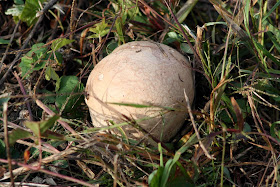By Beth Sullivan
Back in 2012 we began with a small
germ of a proposal to take the Peck/Callahan Preserve, a mature
forest area with diminished benefit to wildlife, and create a new
habitat, one that is scarce in Connecticut-a young forest.
These early stage landscapes are
rare in Connecticut for many reasons. Farms that were abandoned grew
into to young forests at first, but have now aged via the process of
normal succession into more mature woodlands. Fires and other
natural disasters have often been managed, so widespread forest
destruction is rare. And, where woodlands are cut, it is often for
development and the landscape becomes fragmented with suburban
accessories such as homes, yards and roads. None of these support
the wildlife that needs thick dense low-growing vegetation. There are
approximately 50 species in Connecticut that rely on this type of
habitat. The best example was the New England Cottontail that was one
the edge of becoming endangered in our state.
So Avalonia embarked on an ambitious
project, with guidance from USFWS and DEEP and large grants.
Approximately 28 acres of older growth forest were cut leaving some
tall trees to provide shelter and seed sources. It was a pretty
barren and bleak landscape when the project was completed. There was
very little greenery at the end of the cutting. There was woody
debris laid on the ground. This is known as slash, and it provides
soil nutrients as it decays. We also created dozens of brush piles
with some of the debris, which provide immediate shelter for all
kinds of wildlife.
 |
| Before the project, the trees were tall and there was no understory for wildlife. |
 |
| This summer the growth is taller than a person and is dense. |
 |
| Right after the cutting, the brush piles were easy to see and the group was bare. Photograph courtesy DEEP. |
 |
| The same view, and the brush piles are covered with vegetation creating a lush landscape. Photograph by D. Young. |
See our progress
We monitored the area yearly. You
can read about our progress here.
Now fast forward to this summer. The
young forest is developing beautifully. At age 5, it is prime habitat
for providing dense cover for many species. There are no barren
spots or unproductive openings. The vegetation is varied and
includes small trees as well as vines and shrubs bearing fruits and
many berries. The berries are favored by birds and mammals. Smaller
flowering plants have popped up in the sunny openings providing
nectar sources for all sorts of insects. The insects in turn attract
more birds of various species. The only downside to all this
wonderful growth, is that it is now impossible to walk through it at
all. We used to be able to wander through the entire 28 acres with
little difficulty. Now it is grown and tangled and dense-bad for
people, but perfect for New England Cottontails and their friends.
In July, a team went into the area
to assess the growth. One Avalonia member, brought his drone and we
were accompanied by DEEP biologists who have followed this project
from the beginning. We launched the drone and kept an eye on the
video screen, and it flew in a zig zag pattern across the landscape
and also followed the boundaries to places we could not get into.
What we saw and photographed was pretty amazing.
 |
| A towhee is a target species that benefits from the young forest. There were several singing the day we were there. |
 |
| It's easy to see why the landscape is great for wildlife and impossible for humans. |
 |
| The drone comes in for a landing. |
A burst of green
The entire project area was covered
in green. From low growth ferns, the height rose to Low Bush
Blueberries and Huckleberries loaded with fruits. Great for birds
and small mammals, even Box Turtles . There were many mid-height
shrubs and lots of vines. There were viburnum, more blueberries, wild
grapes, blackberries with crazy thorns, and green brier with more
thorns, all providing great hiding places and food as well. The cut
trees had sprouted new growth, and many of them had new stems over
our heads. There were also saplings of a wide variety of trees, from
baby Oaks and maples and hickory and sassafras and many young tulip
trees descended from the one beautiful tall one we left standing.
The brush
piles were nearly obscured by greenery too. Perfect cover and homes.
The biologists were thrilled with the growth. The drone was able to
cover areas we couldn’t get to by foot and, we could pick out
individual areas that we wanted to observe more closely. The
photography was great.
While we stood and monitored the
drone flight, we were so pleased to see a large number of dragonflies
and other insects which attracted a number of birds. We watched tree
and barn swallows, as well as chimney swifts and phoebes and peewees
in flight catching their food. Indigo buntings and towhees sang
from low shrubs. Bluebirds and gold finches also were heard as well
as some of the other species we look and listen for along powerline
cuts, and they can now spread into our young forest.
This report could go on
enthusiastically for many more pages. It was gratifying to see the
results. It was a hard decision early on, to do this kind of project,
but seeing the vast new diversity was heartening. We were excited to
use the drone as a new tool for monitoring difficult properties, and
I know we will go back each year to compare.
The one thing we did not see was a
New England Cottontail. But we did see signs that rabbits had nibbled
several twigs and shrubs. Hopefully they are hiding in the brush
piles.
Photographs by Beth Sullivan, unless
otherwise noted.



















